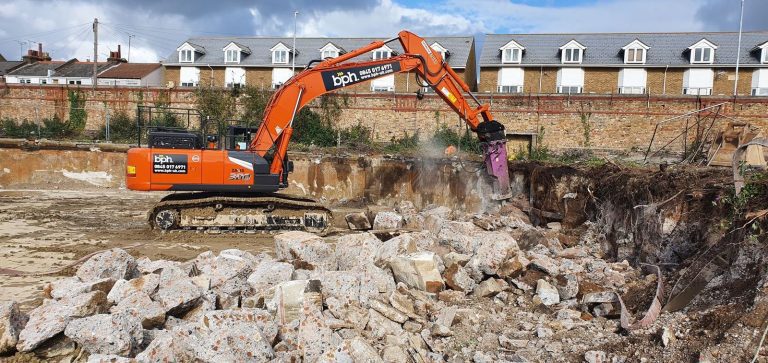The Co-operative Group’s headquarters in Manchester exhibits world-class sustainability, with features such as exposed concrete that acts as a thermal sponge, a rainwater recycling system and a cogeneration combined heat and power (CHP) biofuel boiler. With sustainable commercial buildings on the rise, which eco-friendly features should designers invest in? Here Nick Cowley, managing director at aluminium building product supplier, Endurawood, explores the options. In 2018, the business sector accounted for 18 per cent of overall UK carbon dioxide (CO2) emissions. With the race to combat climate change on, businesses are looking for ways to lower their environmental impact. With the building and construction industry accounting for almost 40 per cent of global emissions, building re-design is a good starting point. Fortunately, many sustainability changes also benefit a business’s bottom line. Renewable energy systems Large commercial buildings can hold thousands of workers, and therefore require a large amount of heating and power. It’s important to put systems in place to save these resources where possible, and source them in a more sustainable way. Building managers must ensure all equipment uses the most up to date technology, which can significantly increase efficiency. For example, air source heat pumps (ASHPs) can absorb heat from the outside air, which is renewable, and use it to heat the internal building. This heating method is highly efficient, with every one kilowatt (kW) of electricity supplied producing two to three kW of heat. The process can also provide air cooling and water heating depending on the model, and even work in minus temperatures. Another way to source your own renewable energy is to install solar panels. Solar panels emit no carbon emissions and use zero water in operation. Installing solar panels has the additional benefit of lowering energy costs, as you aren’t subject to energy supplier prices. Producing your own solar energy can save between six to ten pence per kilowatt hour (kWh). Extra insulation Energy usage by the UK commercial sector increased by 258 kilotonnes of oil equivalent (ktoe) between 2017 to 2018. An impactful way to reduce the figure is to increase building efficiency. Building managers should ensure all windows are rated A for efficiency. Strategic placement of the windows can confer other benefits, such as increased daylight, which naturally warms rooms and further lowers the use of electricity. An additional option is the installation of window films, which can add an extra layer of insulation and even reflect unwanted solar energy to reduce air cooling energy requirements. External cladding can provide further insulation, while protecting the building from weather damage. Cladding can also be used for architectural enhancement, giving the building a sleek and unique look. Green solutions Green roofs, also known as living roofs, involve covering flat or slightly-sloped roofs with a waterproof membrane and then cultivating a layer of vegetation on top. The systems deliver an environmental benefit by removing CO2 from the surrounding air and lowering energy usage by adding extra building insulation. Living roofs also present ecological benefits because they can provide a steppingstone habitat for wildlife. Business benefits include lower energy bills and increased soundproofing, with just twelve centimetres (cm) of substrate reducing sound by around 40 decibels (dB). Additionally, a rain harvesting system can be fitted to the top of the building. Rain harvesting systems collect rainwater that falls into the gutter and transport it to a storage tank. The stored rainwater can be pumped out when needed, and used for various, non-potable uses such as flushing toilets. By incorporating rainwater into the building’s water supply, reliance on mains water supply can be reduced by around 40 per cent. Eco building materials Embodied carbon is a significant concern in the construction industry, which is already renowned for its high levels of emissions. And it’s not just carbon we should worry about, building materials can use glues and solvents that contain volatile organic compounds (VOC), which can form ozone and particulates in the atmosphere, as well as being harmful to human and animal health. In addition, large volumes of building materials can go to waste, ending up in landfills. The UK Government’s most recent figures found that construction, demolition and excavation generated 62 per cent of waste in 2016. To combat this waste, sustainable buildings must be built using materials that have a lower environmental impact. Widely recyclable materials, for example, are an ideal starting place for designers that require durable materials that are better from a recyclability standpoint. Aluminium has one of the highest recycling rates of any metal, namely because its scrap still contains a high value. This means that used aluminium can be melted and reused, without diminishing its original qualities. Furthermore, recycling aluminium only requires five per cent of the energy consumed during its initial creation, and recycling one tonne of the material saves 15,000 kilowatt hours of electricity, making excellent environmental and financial sense. Endurawood is an aluminium building material that looks like wood, and can be used in a range of building applications, such as cladding, railings and enclosures. We believe that greener is better, and use VOC free coatings and lead-free finishes in all our products. Endurawood’s weather resistance and superior durability means it will remain flawless for years to come, but when end of life arrives, it’s 100 per cent recyclable. The Co-operative Group’s Manchester headquarters sets a shining example of sustainability, and with businesses becoming increasingly conscious of their environmental impact, many are following in their footsteps. By incorporating features such as green roofs and solar panels, and using environmentally friendly building materials, commercial buildings can become more sustainable and work towards a greener future.













